Today’s Current Affairs: 24th June 2024 for UPSC IAS exams, State PSC exams, SSC CGL, State SSC, RRB, Railways, Banking Exam & IBPS, etc
Table of Contents
Methane : New Study

According to a new study by researchers from the University of Gothenburg, a significant portion of the methane gas released from the ruptured Nord Stream pipelines in the Baltic Sea last September never made it into the atmosphere.
- Methane is the primary component of natural gas and is responsible for approximately a third of the warming we are experiencing today.
- Methane is a colorless odorless gas, flammable water insoluble gas.
- It is also known as marsh gas or methyl hydride.
- It is easily ignited.
- The vapors are lighter than air. Under prolonged exposure to fire or intense heat the containers may rupture violently and rocket.
- It is a powerful and short-lived greenhouse gas, with a lifetime of about a decade and Global Warming Potential about 80 times greater than that of carbon dioxide (CO2) during the 20 years after it is released into the atmosphere.
- The largest sources of methane are agriculture, fossil fuels, and decomposition of landfill waste.
- It harms human and ecosystem health.
- Its emissions lead to ground-level ozone pollution which causes approximately a million premature deaths per year globally and reduces crop productivity and harms ecosystems.
Global Gas Flaring Tracker Report 2023:
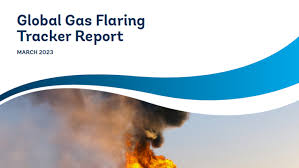
As per the World Bank’s Global Gas Flaring Tracker Report, in 2023, the amount of gas flared worldwide rose by nine billion cubic meters (bcm) to 148 bcm, its highest level since 2019 .
- Gas flaring is the burning of the natural gas associated with oil extraction.
- The practice has persisted from the beginning of oil production over 160 years ago.
- It takes place due to a range of issues, from market and economic constraints, to a lack of appropriate regulation and political will.
- Flaring and venting are a waste of a valuable natural resource that should either be used for productive purposes, such as generating power, or conserved.
- Flaring persists to this day because it is a relatively safe, though wasteful and polluting, method of disposing of the associated gas that comes from oil production.
- The flare’s combustion converts hydrocarbons to carbon dioxide and water, which lessens the climate impact and reduces the safety concerns of the natural gas on site but also produces nitrogen oxides, or NOx.
- NOx—which includes the highly reactive gases nitric oxide and nitrogen dioxide—directly and indirectly impacts air quality.
Fast Track Immigration Trusted Traveller Programme:

The Union Home Minister recently inaugurated the Fast Track Immigration Trusted Traveller Programme (FTI-TTP) at Indira Gandhi International (IGI) Airport.
- Fast Track Immigration Trusted Traveller Programme (FTI-TTP) is an initiative by the Central Government, designed for faster, smoother, and safer immigration clearance.
- It is likely to help reduce congestion at airports by offering expedited emigration and immigration clearance for pre-verified travellers.
- The Ministry of Home Affairs collaborated with the Ministry of Civil Aviation and the Bureau of Immigration for the FTI-TTP.
- The FTI-TTP is similar to the Global Entry Program offered by the United States.
- It allows pre-approved and low-risk travellers to benefit from expedited immigration and security clearance upon arrival.
- Other than New Delhi, the FTI-TTP was launched in Mumbai, Chennai, Kolkata, Bengaluru, Hyderabad, Kochi, and Ahmedabad airports in the first phase.
- The FTI-TTP would run on e-gates or automated border gates that would minimise human intervention in the immigration clearance process and would be implemented in two phases.
- In the first phase, Indian citizens and OCI cardholders will be covered, and foreign travellers will be included in the second phase.
- The FTI-TTP will be implemented through an online portal, and the Bureau of Immigration will be the nodal agency.
- To enroll in the scheme, the applicant has to register online on the portal with details and documents.
- Once the application for FTI-TTP is approved, those individuals will not need to go through the arduous process of standing in long queues for immigration clearance while arriving in India.
- The FTI registration will be valid for a maximum of five years or until the validity of the passport, whichever comes first.
Alka Yagnik diagnosed With Sensorineural Deafness:

Bollywood playback singer Alka Yagnik has been diagnosed with Sensorineural deafness.
- Sensorineural deafness is a type of hearing loss caused by damage to the inner ear or the nerve pathways that transmit sound from the ear to the brain.
- Although sensorineural hearing loss (SNHL) is a natural process of aeging, listening to very loud music can also cause permanent damage to the inner ear or the auditory nerve.
- Within the human inner ear, a spiral-shaped organ called the cochlea contains tiny hairs known as These hairs are responsible for converting vibrations from sound waves into neural signals, which your auditory nerve then transmits to your brain.
- Causes of Sensorineural deafness
- Genetic factors or complications during pregnancy or childbirth
- :Prolonged exposure to loud noise can damage inner ear hair cells, leading to noise-induced hearing loss.
- Natural ageing processes can damage or destroy hair cells in the inner ear.
- Conditions like meningitis, mumps, measles, and autoimmune diseases like Meniere’s disease.
- Head injuries or inner ear trauma.
- Certain antibiotics and chemotherapy drugs.
World Investment Report 2024:
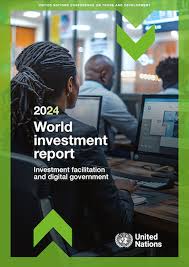
The World Investment Report 2024 was published by the UN Conference on Trade and Development (UNCTAD).
- World Investment Report focuses on trends in foreign direct investment (FDI) worldwide, at the regional and country levels and emerging measures to improve its contribution to development.
Key highlights of the report:
- Global foreign direct investment (FDI) in 2023 decreased marginally, by 2 per cent.
- FDI flows to developing countries fell by 7 per cent to $867 billion, mainly due to an 8 per cent decrease in developing Asia.
China, the second largest FDI recipient in the world, saw a rare decline in inflows. - Industry trends showed lower investment in the infrastructure and digital economy sectors, but strong growth in the global value chain-intensive sectors of manufacturing and critical minerals.
- International investment in sectors relevant for the Sustainable Development Goals in developing countries declined in 2023.
Namaqualand:
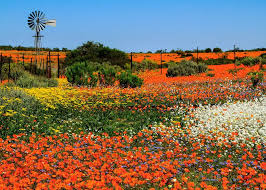
Scientists recently discovered the world’s oldest inhabited termite mounds along the Buffels River in Namaqualand, dating back 34,000 years.
- Namaqualand is a desert region of southwestern Africa.
- From north to south, it stretches from the Karas region of Namibia to the Northern Cape province of South Africa.
- From west to east, it stretches from the Namib Desert to the Kalahari.
- It covers an area of 400,000 square kilometres.
- The Namibian section, north of the Orange River, is sometimes called Great Namaqualand.
- The South African section, south of the Orange River, is sometimes called Little Namaqualand.
- It is very dry. For a large part of the year succulents are almost the only plants that can be seen on the vast plains.
- Succulents can hold water for long periods and can survive in droughts.
- Rain falls mostly in the winter.
- If there is enough rain, wildflowers cover Namaqualand for a few weeks during springtime.
- The area was traditionally inhabited by the Nama people before the German occupation of the region in the 19th century.
- There are large deposits of copper in Namaqualand.
- The Nama mined them for hundreds of years.
- In the early 1900s diamonds were discovered in several places in Namaqualand, including Sperrgebiet in Namibia and the Richtersveld in South Africa.
- Termites are insects that eat wood.
- They can damage buildings, furniture, and other wooden items.
Iberian Lynx : Endangered To Vulnerable
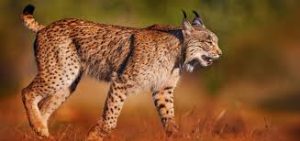
The Iberian lynx, one of the rarest cat species globally, has moved from being ‘endangered’ to ‘vulnerable’ on The International Union for Conservation of Nature (IUCN) Red List.
- Iberian Lynx is one of two carnivore speciesendemic to Europe (the other being European mink, Mustela lutreola).
- It is the world’s most endangered and known for its pointy ears, long legs and leopard-like spotted fur.
- This species, like other cat species, is sexually dimorphic, with males being heavier and longer than females.
- This lynx is generally nocturnaland its activity patterns are closely synchronized with those of their major prey, the rabbit.
- It was once distributed throughout the Iberian Peninsula, the species is now sparsely distributed in Spain and Portugal.
- These are related to human activities, such as poaching and habitat destruction, Illegal Hunting and decrease food base etc.
- Conservation status
- IUCN Red list: Vulnerable
- CITES:Appendix II
Encephalartos woodii:
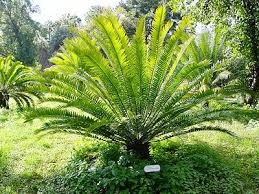
Scientists are using remote sensing technologies and artificial intelligence to assist the search for a female to Encephalartos woodii plant in the Ngoye Forest.
- Encephalartos woodii is a plant from South Africa and is a member of the cycad family with thick trunks and large stiff leaves that form a majestic crown.
- Cycads are the oldest surviving plant groups alive today and are often referred to as “living fossils” or “dinosaur plants” due to their evolutionary history dating back to the Carboniferous period, approximately 300 million years ago.
- During the Mesozoic era (250-66 million years ago), also known as the Age of Cycads, these plants were ubiquitous, thriving in the warm, humid climates that characterised the period.
- Although they resemble ferns or palms, cycads are not related to either.
- Cycads are gymnosperms, a group that includes conifers and ginkgos. Unlike flowering plants (angiosperms), cycads reproduce using cones.
- It is impossible to tell male and female apart until they mature and produce their magnificent cones.
- Female cones are typically wide and round, and male cones appear elongated and narrower.
- The male cones produce pollen, which is carried by insects (weevils) to the female cones.
- This ancient method of reproduction has remained largely unchanged for millions of years.
- Despite their longevity, today cycads are ranked as the most endangered living organisms on Earth with the majority of the species considered threatened with extinction.
- This is because of their slow growth and reproductive cycles, typically taking ten to 20 years to mature, and habitat loss due to deforestation, grazing and over-collection.
- Their striking appearance and ancient lineage make them popular in exotic ornamental horticulture and that has led to illegal trade.
Claude 3.5 Sonnet:

Anthropic has launched its latest AI model called Claude 3.5 Sonnet — the company’s first release in the upcoming Claude 3.5 AI model series.
- Claude 3.5 Sonnet is a large language model (LLM), and is part of the family of LLMs which is being developed by Anthropic.
- These models are known as generative pre-trained transformers, which mean they have been pre-trained to predict the next word in large amounts of text.
- It is likely to be the middle model (based on parameter size) in the upcoming series of AI models by Anthropic — the smallest and biggest models are yet to be released.
- Anthropic has said Claude 3.5 Sonnet outperforms Claude 3 Opus by a huge margin. The new model is claimed to be twice as fast as the Claude 3 Sonnet.
- It is Anthropic’s strongest vision model. A vision model in AI is a model capable of interpreting and analysing visual data such as images and videos.
- According to the company, the improvements in Claude 3.5 Sonnet are most noticeable for tasks that require visual reasoning such as decoding charts and graphs. The model is also capable of accurately transcribing text from imperfect images.
- According to Anthropic, Claude 3.5 Sonnet sets some new industry benchmarks in capabilities such as coding proficiency (HumanEval), graduate-level reasoning (GPQA), and undergraduate-level knowledge (MMLU).
- The new model has also shown significant improvement in grasping nuance, humour, and complex instructions.
Viability Gap Funding (VGF) Scheme:

The Union Cabinet has recently approved the Viability Gap Funding (VGF) scheme for offshore wind energy projects with a total outlay of Rs.7453 crore.
- The scheme includes the installation and commissioning of 1 GW (Gigawatt) of offshore wind energy projects with an outlay of Rs. 6853 crore, featuring 500 MW wind energy projects off the coasts of Gujarat and Tamil Nadu.
- Offshore wind is a source of renewable energy which offers several advantages such as higher adequacy & reliability, lower storage requirement.
- The VGF scheme, overseen by the Ministry of New and Renewable Energy, is a major step towards implementing the National Offshore Wind Energy Policy notified in 2015.
- VGF is a government grant of up to 40% of the total project cost, provided to support infrastructure projects that are economically justified but not financially viable.
- The VGF support from the Government will reduce the cost of power from offshore wind projects and make them viable for purchase by Distribution Companies (DISCOMs).
School In a Box Initiative : Assam

In Assam because of devastating floods and landslides claiming lives, children in relief camps will receive educational support through a “school in a box” initiative.
- Designed by UNICEF, these kits cater to children aged 6-18, providing learning materials to ensure education continuity despite displacement and trauma. disasters.
- The initiative to provide “school in a box” kits during Assam’s floods reflects several ethical values. It prioritizes:
- By addressing the educational needs of children amidst trauma, the initiative demonstrates compassion and care for vulnerable populations.
- The kits are designed to cater to children aged 6-18, ensuring inclusivity and equitable access to educational resources regardless of age or background.
- Training sessions for officials and grassroots workers underscore a commitment to responsibly managing relief efforts, ensuring accountability in education and relief camp operations.
- By considering the psychological impact of displacement, the initiative shows empathy and provides essential support to help children overcome trauma and continue their education.
- Initiatives such as installing sanitary napkin vending machines in relief camps reflect a sustainable approach to addressing broader health and hygiene needs, promoting dignity and well-being




